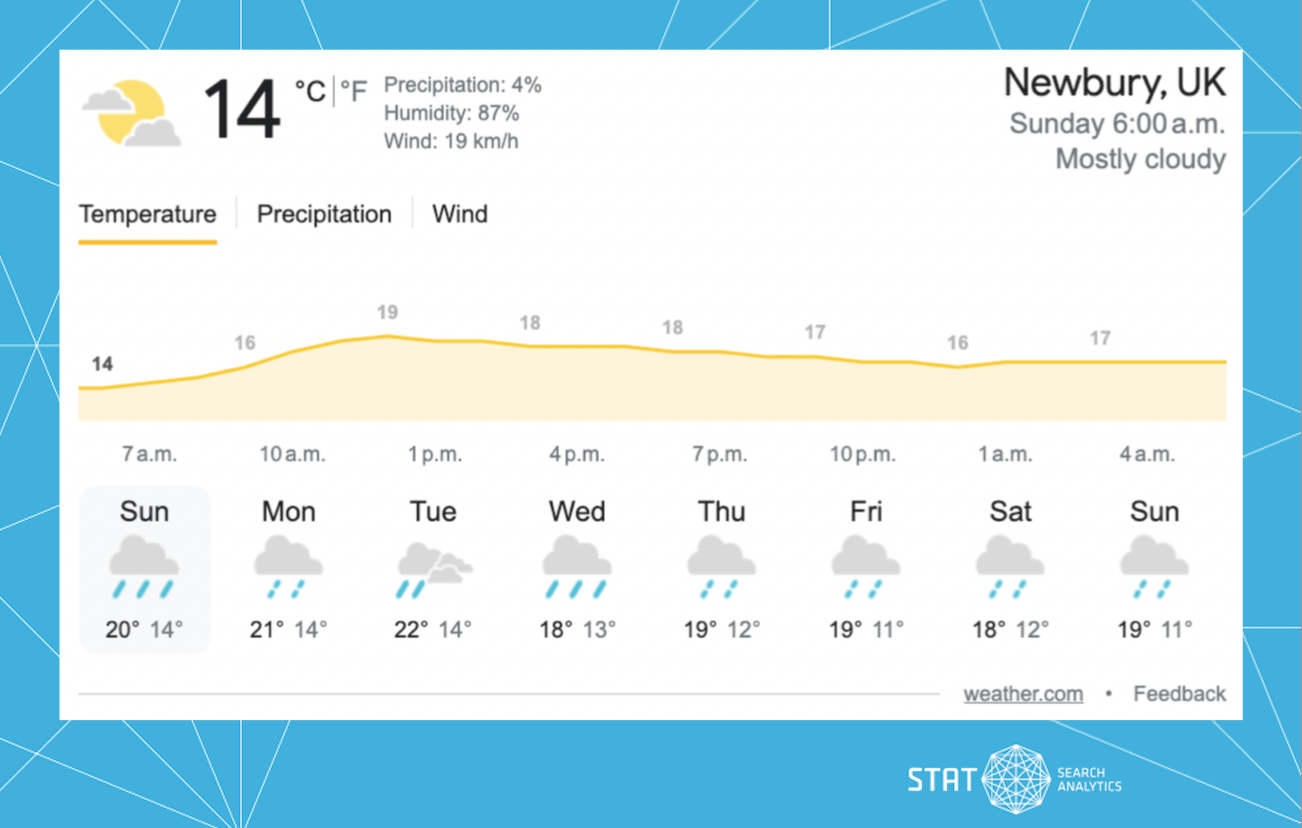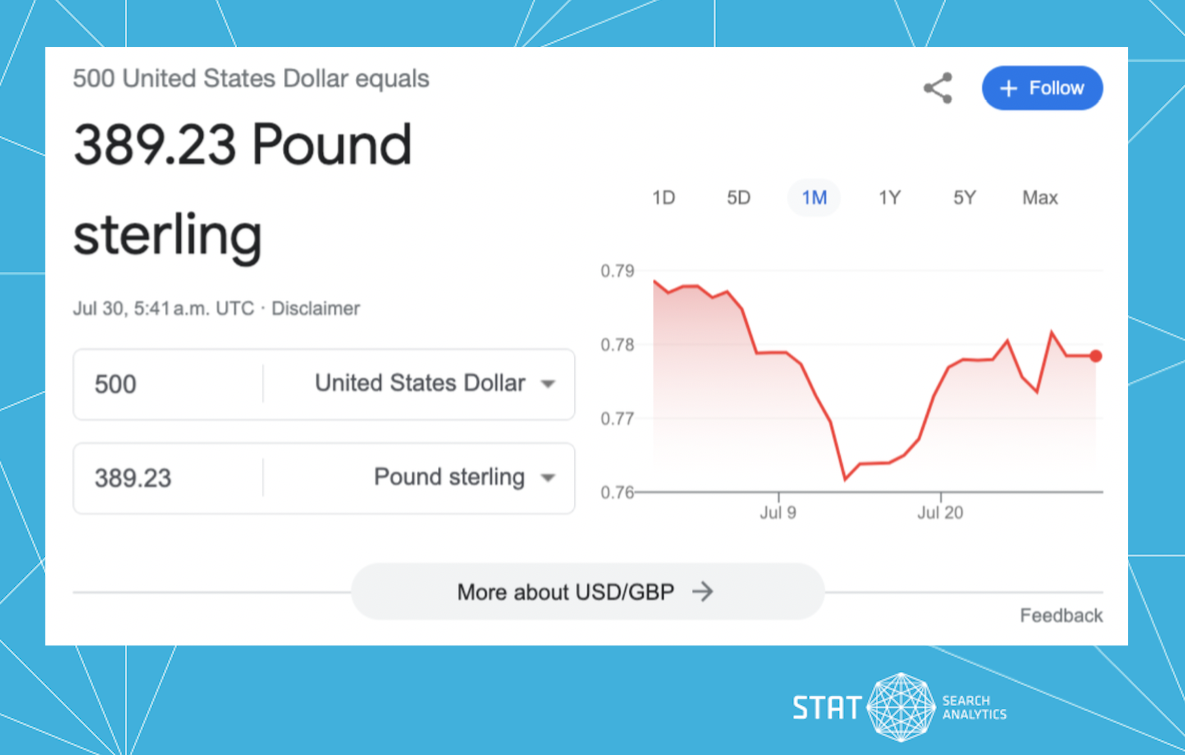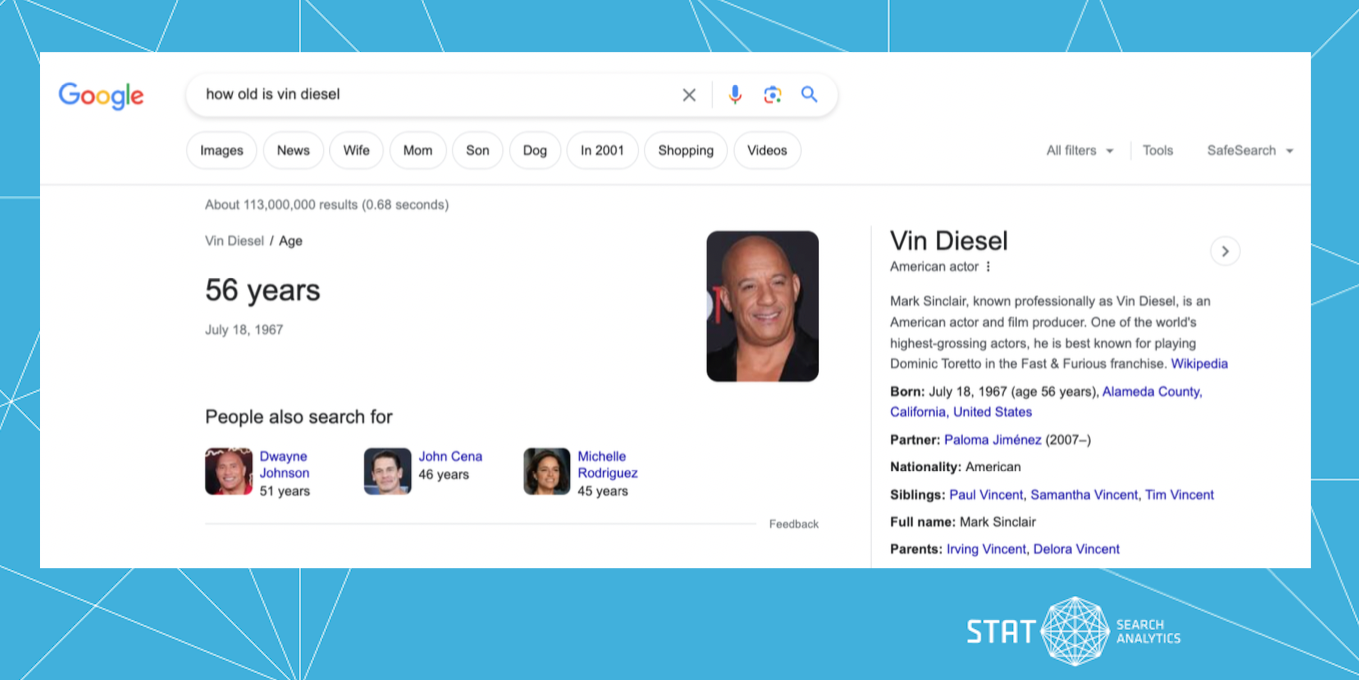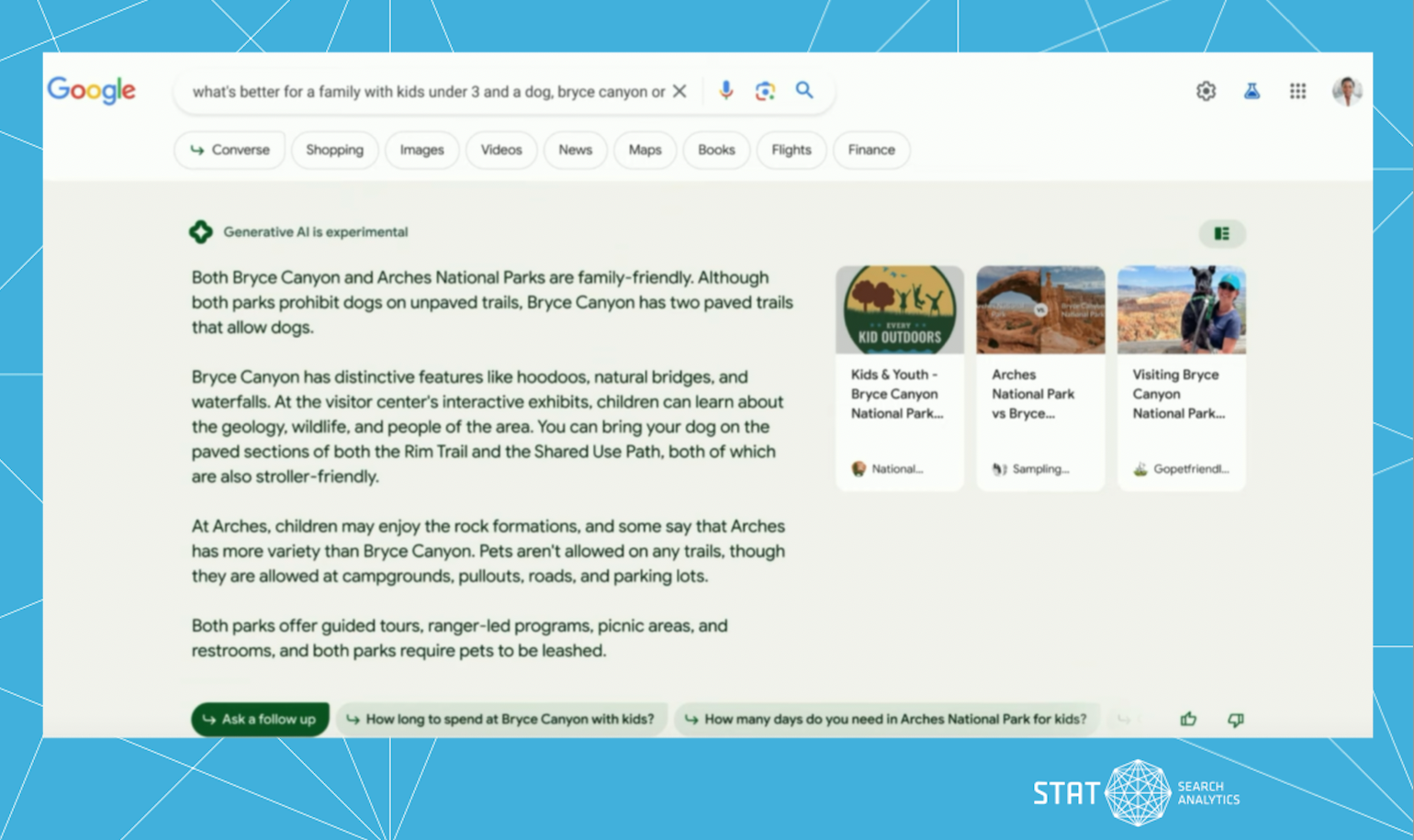Despite hot debate around generative AI in search, more content on the SERP itself doesn’t necessarily spell doom for SEOs.
I wrote recently about how I don’t expect Google’s Search Generative Experience (SGE) to ever get a full rollout in anything like its current form.
However, what if I’m wrong? Is SEO dead? Are we all doomed? Is this finally the end for the likes of us?
I don’t think so. If anything, it might be the best possible outcome for the SEO industry — at least under the circumstances that would result in this decision. Let me explain.
The bottom line is: it’s all about user satisfaction
Forget, for just a second, that you work in SEO, or marketing more generally. As a user of Google, I would humbly suggest that there are certain searches where you’d rather not have to click through to a website. Say you want to know the weather forecast…
Storm's a' brewin'
A drizzly week ahead laid out on the SERP.
…or a currency conversion…
Currency conversion right on the SERP
A handy conversion tool without having to click through to a site.
…or the answer to a simple question…
A simple query with a simple answer
Vin’s still fast and furious at 56.
…or what time it is somewhere else in the world, or the definition of a word, or so much else besides. It really would not improve my experience as a user to have to click through to weather.com to see the same forecast that’s already appearing on the SERP shown above (sorry, weather.com).
From Google’s perspective, however, these widgets cost money to design, make, maintain, and keep updated. They are not monetized or even leading into any kind of commercial funnel, yet Google has these features, because they care about user experience.
Not out of some sense of altruism, but because they (like any other product — and especially any market leader) need to keep users coming back and defaulting to their product for every possible use case.
I have often referred to this CNBC article from 2018, which talks about how Google evaluated small changes to its UI or search algorithm.
These changes were evaluated according to “various data points, like what percent of users clicked through a picture-link and then quickly clicked back (a bad sign), or whether there was a significant increase in the time until they made their first interaction with the results (also bad).”
This is Google constantly optimizing for user experience — for its own KPIs and goals — just like any other company.
Loss leaders
For many of the use cases I mentioned above, there are better tools than Google. There are weather apps which are better at displaying incoming weather than a Google SERP is. There are currency conversion apps.
And, of course, now there is the elephant in the room, ChatGPT, on hand to handle (with more or less accuracy) all kinds of trivia questions and other tasks.
Google has shown that it doesn’t have to do better than these indirect competitors — it does not need to beat them at their own game. Like the bakery aisle in my local supermarket, it does not need to be better than an actual bakery, just good enough that it’s not worth me making a separate trip.
In this case: what’s good for Google is good for us
This may seem controversial — SEOs sometimes see Google as their adversary. Broadly speaking, though, Google retaining users, and importantly, keeping them in web search as opposed to a disparate array of alternative tools, is probably good for SEOs.
Yes, we can no longer make a weather site and expect to compete for the click of the person searching for weather queries. But if Google did not have this widget, what then? Would users still “Google it,” or would they install a weather app?
Probably a bit of both, but every case like this chips away at the dominance of web search as an ecosystem — an ecosystem that as SEOs we are highly invested in.
This goes for algorithm updates too. Google is not making these changes to mess with us, it is making them to retain users in the search ecosystem. (Okay, perhaps sometimes there could be more nefarious aims, but that’s for another post.)
Concepts like E-E-A-T and “helpful content” are frustrating in that they seem like a Rorschach test (and of course we’ve given Google every reason to play its cards close to its chest), but broadly speaking, this is about Google hitting its own KPIs for satisfying searcher intent, and, as such, maintaining its market dominance.
How does Google’s Search Generative Experience fit into this?
As with the Vin Diesel example above, SGEs are the latest chapter in the ongoing saga of Google trying to answer questions directly in the SERP.
Google's Search Generative Experience
Google is experimenting with generative AI in search results.
Keep in mind that Google is a company that overwhelmingly makes money by sending traffic to websites. Like their predecessors, SGEs are loss leaders, and can never be a total replacement for search results (even more so, given the costs associated with generative AI right now).
In addition, SGEs feature organic articles (even if they have little overlap with traditional organic results), and often feature Google Shopping or Google Business data — so there are opportunities for marketers here if I am wrong and Google does, in fact, push full steam ahead with this feature in its current form.
Commodity content was already doomed
If you are putting out the kind of content where an SGE is genuinely better for the user than clicking through to your site, you’ve been in trouble for some time already.
Knowledge graph results joined us a decade ago. Featured snippets nearly the same. Articles with titles like “How old is Vin Diesel?” are not just endangered, they are dinosaurs. The bar for what constitutes commodity content like this has gradually risen over time and will continue to do so.
But, if you are a publisher, then at some point you produced a kind of content that caused people to buy magazines or newspapers in the first place. This kind of content does not answer whimsical trivia queries, formulaic product comparisons, or live timezone conversion.
This kind of expert, interesting, and human content is still in demand, as evidenced by numerous brands now successfully making the transition to paywall models. It is hard to see how SGEs could threaten this any time soon.
As for top of funnel marketing content, well yes, that can be eroded by SERP features too. But if you are the retailer, this does not cost you revenue — it only means the user starts further down the funnel.
The top of your funnel is a game you now need to play differently, but it’s still in play. If you are an affiliate, well, Google has been at war with you for a while, through various product review updates and similar — but that is not an SGE or even a SERP feature phenomenon.
The SERP is dead, long live the SERP
If Google does roll out SGEs in their current state to the masses (and, again, I think there is a lot of work needed before that can happen), then their hand has been forced by a perceived need to see off some existential threat from an indirect competitor.
This would not be something they ever did gladly. It costs them money — both to produce the snippet and to reduce the level of monetization on the SERP.
Like the various other SERP widgets before it, this would be about keeping users engaged with Google Search as the default answer engine. As such, unless as SEOs we prefer to try to wring traffic out of whatever tool or tools were threatening Google here, we are just as defended by Google’s defence mechanisms as Google themselves.






